Java Learning Resources

Order Now
Why Choose The Programming Assignment Help?
On Time Delivery
Plagiarism Free Service
24/7 Support
Affordable Pricing
PhD Holder Experts
100% Confidentiality
- Java GUI Programming with Swing
- JDBC Tutorial: Connecting to a Database in Java
- Java Networking: Building Your First Socket Program
- Multithreading in Java: A Beginner's Guide
- Java Exception Handling: Try, Catch, Finally Explained
- Java Collections Framework: A Comprehensive Guide
- How to Debug Java Programs Like a Pro
- The 10 Most Important Java Concepts You Need to Know
- Conquering Common Syntax Errors in Java
- Compare Performance of Supermarkets in Each City
- Produce a list of all words that have 6 or more anagrams
- Java Game Project- Tic-Tac-Toe 2.0 With 3 to 10 players
- Binary Search Tree with Range Minimum Queries (RMQs)
- Write Pong Game Code in Java Programming
- Write Snake Game Code in Java Programming
- Java Programming In BlueJ
- Math Calculations Using Java
- Mathematics Using Java
- Model View Controller In Java
- Networking - Number Guessing Assignment Solution
- CSCI312 Big Data Management - Java Solution
- CPI221 Java Solution - Using JDBC and SQL in Java
- Tic Tac Toe in Java Programming - Eclipse IDE, UML diagram
- Railway Network DV1490

Head First Java (Kathy Sierra, Elisabeth Robson)
This book adopts a visually immersive approach to impart Java concepts, catering especially to novices who find traditional learning methods less captivating. By leveraging visual aids and interactive elements, it offers an engaging learning experience, ensuring that foundational Java principles are easily understood and retained by learners of all levels.
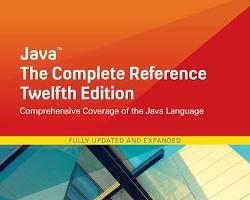
Java: The Complete Reference (Herbert Schildt)
"Java: The Complete Reference" is an exhaustive resource for Java programming, offering in-depth coverage of fundamental concepts as well as advanced topics. With comprehensive explanations and practical examples, it serves as a go-to guide for learners seeking to master Java from the ground up.

Core Java Volume I—Fundamentals (Horstmann Cay S.)
This book offers a robust introduction to Java programming fundamentals, emphasizing core concepts of object-oriented programming. Through clear explanations and practical examples, it lays a solid groundwork for understanding Java's object-oriented principles, empowering learners to build strong programming skills.

Effective Java (Joshua Bloch)
"Effective Java" is a timeless masterpiece renowned for its guidance on crafting clean, maintainable, and efficient Java code. Offering invaluable insights and best practices, it serves as an indispensable resource for developers striving to elevate their Java programming skills to the next level.

OCA Java SE 17 (Jeanne Boyarsky, Scott W. Hallmark)
The "OCA Java SE 17" book is your essential companion for preparing for the Oracle Certified Associate Java SE 17 certification exam. With comprehensive coverage of exam topics, practice questions, and exam tips, it provides a structured and effective approach to help you succeed in achieving your certification goals.
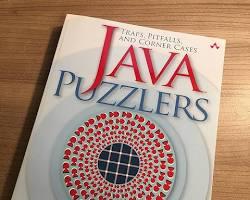
Java Puzzlers: Traps, Pitfalls, and Corner Cases (Joshua Bloch)
"Java Puzzlers: Traps, Pitfalls, and Corner Cases" is a captivating book designed to sharpen your problem-solving skills and enhance your comprehension of Java. Through a series of intricate puzzles and enigmatic scenarios, it challenges you to unravel Java's nuances and pitfalls, fostering a deeper understanding of the language while honing your ability to navigate complex coding challenges.
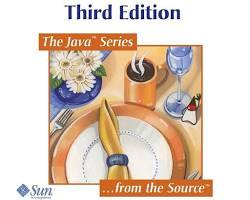
The Java Language Specification (James Gosling, Bill Joy, Guy Steele, Gilad Bracha)
"The Java Language Specification" stands as the ultimate authority on the Java programming language, penned by its creators themselves. This comprehensive reference provides detailed insights into the language's syntax, semantics, and rules, serving as an indispensable resource for developers seeking a deep understanding of Java's inner workings.
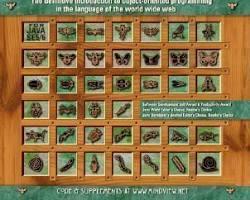
Thinking in Java (Bruce Eckel)
"Thinking in Java" offers an immersive exploration of Java concepts, guiding readers to adopt the mindset of a seasoned Java programmer. Through comprehensive explanations and practical examples, it fosters a deeper understanding of Java principles and empowers readers to approach programming challenges with confidence and professionalism.

Head First Design Patterns (Eric Freeman, Elisabeth Robson, Bert Bates, Kathy Sierra)
"Head First Design Patterns" is an engaging and interactive book that demystifies the concept of design patterns, offering practical insights into crafting reusable solutions for common software design challenges. Through its unique approach of combining visuals, stories, and exercises, it helps readers grasp complex concepts with ease, empowering them to apply design patterns effectively in their own projects.
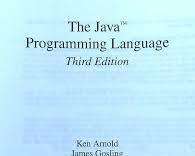
The Java™ Programming Language (Kenneth Arnold, James Gosling, David Holmes)
"The Java™ Programming Language" is yet another timeless masterpiece authored by the creators of Java, offering a comprehensive exploration of the language. With its authoritative insights and meticulous explanations, this book serves as an essential reference for developers seeking to deepen their understanding of Java's intricacies and harness its full potential in their projects.
Java String Methods
Java String Methods
Description
split()
Splits the string at the specified string (regex)
compareTo()
Compares two strings in the dictionary order
compareToIgnoreCase()
Compares two strings ignoring case differences
length()
Returns the length of the string
replace()
Replace all matching characters/text in the string
replaceAll()
Replace all substrings matching the regex pattern
substring()
Returns a substring from the given string
equals()
Compares two strings
equalsIgnoreCase()
Compares two strings ignoring case differences
contains()
Checks whether the string contains a substring
indexOf()
Returns the index of the character/substring
trim()
Removes any leading and trailing whitespace
charAt()
Returns the character at the given index
toLowerCase()
Converts characters in the string to lower case
concat()
Concatenates two strings and returns it
valueOf()
Returns the string representation of a value
matches()
checks whether the string matches the given regex
startsWith()
Checks if the string begins with the given string
endsWith()
Checks if the string ends with the given string
isEmpty()
Checks whether a string is empty or not
intern()
Returns a canonical representation of the string
getBytes()
Encodes the string into a sequences of bytes
contentEquals()
Checks whether the string is equal to charSequence
hashCode()
Returns a hash code for the string
join()
Joins the given strings using the delimiter
replaceFirst()
Replace the first matching substring
subSequence()
Returns a subsequence from the string
toCharArray()
Converts the string to a char array
format()
Returns a formatted string
Java ArrayList Methods
Java ArrayList Methods
Description
add()
Inserts the element into the ArrayList
addAll()
Adds all elements of a collection to the ArrayList
clear()
Removes all elements from the ArrayList
clone()
Makes a copy of the ArrayList
contains()
Checks if the element is present in the ArrayList
get()
Returns the element present at the specified index
indexOf()
Returns the position of the specified element
removeAll()
Removes multiple elements from the ArrayList
remove()
Removes a single element from the ArrayList
size()
Returns the length of the ArrayList
isEmpty()
Checks if the ArrayList is empty
subList()
Returns a portion of the ArrayList
set()
Replaces a single element in the ArrayList
sort()
Sorts the ArrayList according to specified order
toArray()
Converts the ArrayList to an array
toString()
Converts the ArrayList into a String
ensureCapacity()
Sets the size of the ArrayList
lastIndexOf()
Returns the position of the last occurrence of the element
retainAll()
Retains only the common elements
containsAll()
Checks if a collection is a subset of the ArrayList
trimToSize()
Trims the capacity of the ArrayList equal to the size
removeRange()
Removes a portion of the ArrayList
replaceAll()
Replaces all elements in the ArrayList
removeIf()
Removes elements that satisfy the condition
forEach()
Performs an action on all elements of the ArrayList
iterator()
Returns an iterator to loop through the ArrayList
Java HashMap Methods
Java HashMap Methods
Description
clear()
Removes all elements from the HashMap
clone()
Makes a copy of the HashMap
isEmpty()
Checks if the HashMap is empty
size()
Returns the number of items in the HashMap
put()
Inserts the specified item into the HashMap
putAll()
Inserts all items from a map into the HashMap
putIfAbsent()
Inserts item if the key is not already present
remove()
Removes the mapping for the specified key
containsKey()
Checks if the specified key is present in HashMap
containsValue()
Checks if HashMap contains the specified value
replace()
Replaces the value for the specified key
replaceAll()
Replaces all values with a new value
get()
Returns the value using the specified key
getOrDefault()
Returns a specified default value if key not found
forEach()
Performs the action on all entries of HashMap
entrySet()
Returns a set view of all entries in the HashMap
keySet()
Returns a set view of all the keys in HashMap
values()
Returns a view of all values present in HashMap
merge()
Merges the specified mapping into the HashMap
compute()
Computes a new value for the specified key
computeIfAbsent()
Computes value if mapping for key is not present
computeIfPresent()
Computes a value for the mapping if key is present
Java Math Methods
Java Math Methods
Description
abs()
Returns the absolute value of a number
acos()
Returns the arc cosine of the specified value
addExact()
Adds the specified numbers and returns the result
asin()
Returns the arc sine of the specified argument
atan()
Returns the inverse tangent function of a value
cos()
Returns the cosine of the specified angle
sin()
Returns the sine of the specified angle in radians
tan()
Returns the tangent value of the specified angle
sinh()
Returns the hyperbolic sine of the specified value
cosh()
Returns hyperbolic cosine of the specified value
tanh()
Returns hyperbolic tangent of the specified value
sqrt()
Returns the square root of the specified number
cbrt()
Returns the cube root of the specified number
pow()
Returns the first argument raised to the power of second
subtractExact()
Subtracts the specified numbers and returns the result
multiplyExact()
Multiplies the specified numbers and returns the result
incrementExact()
Adds 1 to the specified number and returns it
decrementExact()
Subtracts 1 from specified number and returns it
negateExact()
Negates the specified variable and returns it
toIntExact()
Returns the int value from specified long argument
min()
Returns the smaller value among the arguments
max()
Returns the maximum value among the arguments
ceil()
Rounds the specified value upward
floor()
Rounds the specified value downward and returns it
round()
Rounds the specified argument and returns it
toRadians()
Converts angle from degree to radians
toDegrees()
Converts angle from radians to degrees
atan2()
Returns θ converting coordinates (x, y) to (r, θ)
copySign()
Copies the sign of the second argument to the first
exp()
Returns e raised to the power of the given value
expm1()
Returns e raised to the power of the given value minus 1
getExponent()
Returns the unbiased exponent of specified number
hypot()
Computes the hypotenuse of a right-angle triangle
IEEEremainder()
Returns the remainder as per the IEEE 754 standard
log()
Returns the natural logarithm of specified value
log10()
Returns the base 10 logarithm of specified value
log1p()
Returns natural logarithm of (specified value + 1)
nextAfter()
Returns number adjacent to specified number
nextUp()
Returns number greater than and adjacent to value
nextDown()
Returns number less than and adjacent to the value
rint()
Returns closest mathematical integer of the value
random()
Returns a random value between 0.0 and 1.0
Java Object Methods
Java Object Methods
Description
getClass()
Returns the class name of the object
hashCode()
Returns the hashcode value of the object
toString()
Converts an object into a string
equals()
Checks if two objects are equal
clone()
Creates a copy of the object
|
Java String Methods |
Description |
|---|---|
|
split() |
Splits the string at the specified string (regex) |
|
compareTo() |
Compares two strings in the dictionary order |
|
compareToIgnoreCase() |
Compares two strings ignoring case differences |
|
length() |
Returns the length of the string |
|
replace() |
Replace all matching characters/text in the string |
|
replaceAll() |
Replace all substrings matching the regex pattern |
|
substring() |
Returns a substring from the given string |
|
equals() |
Compares two strings |
|
equalsIgnoreCase() |
Compares two strings ignoring case differences |
|
contains() |
Checks whether the string contains a substring |
|
indexOf() |
Returns the index of the character/substring |
|
trim() |
Removes any leading and trailing whitespace |
|
charAt() |
Returns the character at the given index |
|
toLowerCase() |
Converts characters in the string to lower case |
|
concat() |
Concatenates two strings and returns it |
|
valueOf() |
Returns the string representation of a value |
|
matches() |
checks whether the string matches the given regex |
|
startsWith() |
Checks if the string begins with the given string |
|
endsWith() |
Checks if the string ends with the given string |
|
isEmpty() |
Checks whether a string is empty or not |
|
intern() |
Returns a canonical representation of the string |
|
getBytes() |
Encodes the string into a sequences of bytes |
|
contentEquals() |
Checks whether the string is equal to charSequence |
|
hashCode() |
Returns a hash code for the string |
|
join() |
Joins the given strings using the delimiter |
|
replaceFirst() |
Replace the first matching substring |
|
subSequence() |
Returns a subsequence from the string |
|
toCharArray() |
Converts the string to a char array |
|
format() |
Returns a formatted string |
|
Java ArrayList Methods |
Description |
|---|---|
|
add() |
Inserts the element into the ArrayList |
|
addAll() |
Adds all elements of a collection to the ArrayList |
|
clear() |
Removes all elements from the ArrayList |
|
clone() |
Makes a copy of the ArrayList |
|
contains() |
Checks if the element is present in the ArrayList |
|
get() |
Returns the element present at the specified index |
|
indexOf() |
Returns the position of the specified element |
|
removeAll() |
Removes multiple elements from the ArrayList |
|
remove() |
Removes a single element from the ArrayList |
|
size() |
Returns the length of the ArrayList |
|
isEmpty() |
Checks if the ArrayList is empty |
|
subList() |
Returns a portion of the ArrayList |
|
set() |
Replaces a single element in the ArrayList |
|
sort() |
Sorts the ArrayList according to specified order |
|
toArray() |
Converts the ArrayList to an array |
|
toString() |
Converts the ArrayList into a String |
|
ensureCapacity() |
Sets the size of the ArrayList |
|
lastIndexOf() |
Returns the position of the last occurrence of the element |
|
retainAll() |
Retains only the common elements |
|
containsAll() |
Checks if a collection is a subset of the ArrayList |
|
trimToSize() |
Trims the capacity of the ArrayList equal to the size |
|
removeRange() |
Removes a portion of the ArrayList |
|
replaceAll() |
Replaces all elements in the ArrayList |
|
removeIf() |
Removes elements that satisfy the condition |
|
forEach() |
Performs an action on all elements of the ArrayList |
|
iterator() |
Returns an iterator to loop through the ArrayList |
Java HashMap Methods
Java HashMap Methods
Description
clear()
Removes all elements from the HashMap
clone()
Makes a copy of the HashMap
isEmpty()
Checks if the HashMap is empty
size()
Returns the number of items in the HashMap
put()
Inserts the specified item into the HashMap
putAll()
Inserts all items from a map into the HashMap
putIfAbsent()
Inserts item if the key is not already present
remove()
Removes the mapping for the specified key
containsKey()
Checks if the specified key is present in HashMap
containsValue()
Checks if HashMap contains the specified value
replace()
Replaces the value for the specified key
replaceAll()
Replaces all values with a new value
get()
Returns the value using the specified key
getOrDefault()
Returns a specified default value if key not found
forEach()
Performs the action on all entries of HashMap
entrySet()
Returns a set view of all entries in the HashMap
keySet()
Returns a set view of all the keys in HashMap
values()
Returns a view of all values present in HashMap
merge()
Merges the specified mapping into the HashMap
compute()
Computes a new value for the specified key
computeIfAbsent()
Computes value if mapping for key is not present
computeIfPresent()
Computes a value for the mapping if key is present
Java Math Methods
Java Math Methods
Description
abs()
Returns the absolute value of a number
acos()
Returns the arc cosine of the specified value
addExact()
Adds the specified numbers and returns the result
asin()
Returns the arc sine of the specified argument
atan()
Returns the inverse tangent function of a value
cos()
Returns the cosine of the specified angle
sin()
Returns the sine of the specified angle in radians
tan()
Returns the tangent value of the specified angle
sinh()
Returns the hyperbolic sine of the specified value
cosh()
Returns hyperbolic cosine of the specified value
tanh()
Returns hyperbolic tangent of the specified value
sqrt()
Returns the square root of the specified number
cbrt()
Returns the cube root of the specified number
pow()
Returns the first argument raised to the power of second
subtractExact()
Subtracts the specified numbers and returns the result
multiplyExact()
Multiplies the specified numbers and returns the result
incrementExact()
Adds 1 to the specified number and returns it
decrementExact()
Subtracts 1 from specified number and returns it
negateExact()
Negates the specified variable and returns it
toIntExact()
Returns the int value from specified long argument
min()
Returns the smaller value among the arguments
max()
Returns the maximum value among the arguments
ceil()
Rounds the specified value upward
floor()
Rounds the specified value downward and returns it
round()
Rounds the specified argument and returns it
toRadians()
Converts angle from degree to radians
toDegrees()
Converts angle from radians to degrees
atan2()
Returns θ converting coordinates (x, y) to (r, θ)
copySign()
Copies the sign of the second argument to the first
exp()
Returns e raised to the power of the given value
expm1()
Returns e raised to the power of the given value minus 1
getExponent()
Returns the unbiased exponent of specified number
hypot()
Computes the hypotenuse of a right-angle triangle
IEEEremainder()
Returns the remainder as per the IEEE 754 standard
log()
Returns the natural logarithm of specified value
log10()
Returns the base 10 logarithm of specified value
log1p()
Returns natural logarithm of (specified value + 1)
nextAfter()
Returns number adjacent to specified number
nextUp()
Returns number greater than and adjacent to value
nextDown()
Returns number less than and adjacent to the value
rint()
Returns closest mathematical integer of the value
random()
Returns a random value between 0.0 and 1.0
Java Object Methods
Java Object Methods
Description
getClass()
Returns the class name of the object
hashCode()
Returns the hashcode value of the object
toString()
Converts an object into a string
equals()
Checks if two objects are equal
clone()
Creates a copy of the object
|
Java HashMap Methods |
Description |
|---|---|
|
clear() |
Removes all elements from the HashMap |
|
clone() |
Makes a copy of the HashMap |
|
isEmpty() |
Checks if the HashMap is empty |
|
size() |
Returns the number of items in the HashMap |
|
put() |
Inserts the specified item into the HashMap |
|
putAll() |
Inserts all items from a map into the HashMap |
|
putIfAbsent() |
Inserts item if the key is not already present |
|
remove() |
Removes the mapping for the specified key |
|
containsKey() |
Checks if the specified key is present in HashMap |
|
containsValue() |
Checks if HashMap contains the specified value |
|
replace() |
Replaces the value for the specified key |
|
replaceAll() |
Replaces all values with a new value |
|
get() |
Returns the value using the specified key |
|
getOrDefault() |
Returns a specified default value if key not found |
|
forEach() |
Performs the action on all entries of HashMap |
|
entrySet() |
Returns a set view of all entries in the HashMap |
|
keySet() |
Returns a set view of all the keys in HashMap |
|
values() |
Returns a view of all values present in HashMap |
|
merge() |
Merges the specified mapping into the HashMap |
|
compute() |
Computes a new value for the specified key |
|
computeIfAbsent() |
Computes value if mapping for key is not present |
|
computeIfPresent() |
Computes a value for the mapping if key is present |
|
Java Math Methods |
Description |
|---|---|
|
abs() |
Returns the absolute value of a number |
|
acos() |
Returns the arc cosine of the specified value |
|
addExact() |
Adds the specified numbers and returns the result |
|
asin() |
Returns the arc sine of the specified argument |
|
atan() |
Returns the inverse tangent function of a value |
|
cos() |
Returns the cosine of the specified angle |
|
sin() |
Returns the sine of the specified angle in radians |
|
tan() |
Returns the tangent value of the specified angle |
|
sinh() |
Returns the hyperbolic sine of the specified value |
|
cosh() |
Returns hyperbolic cosine of the specified value |
|
tanh() |
Returns hyperbolic tangent of the specified value |
|
sqrt() |
Returns the square root of the specified number |
|
cbrt() |
Returns the cube root of the specified number |
|
pow() |
Returns the first argument raised to the power of second |
|
subtractExact() |
Subtracts the specified numbers and returns the result |
|
multiplyExact() |
Multiplies the specified numbers and returns the result |
|
incrementExact() |
Adds 1 to the specified number and returns it |
|
decrementExact() |
Subtracts 1 from specified number and returns it |
|
negateExact() |
Negates the specified variable and returns it |
|
toIntExact() |
Returns the int value from specified long argument |
|
min() |
Returns the smaller value among the arguments |
|
max() |
Returns the maximum value among the arguments |
|
ceil() |
Rounds the specified value upward |
|
floor() |
Rounds the specified value downward and returns it |
|
round() |
Rounds the specified argument and returns it |
|
toRadians() |
Converts angle from degree to radians |
|
toDegrees() |
Converts angle from radians to degrees |
|
atan2() |
Returns θ converting coordinates (x, y) to (r, θ) |
|
copySign() |
Copies the sign of the second argument to the first |
|
exp() |
Returns e raised to the power of the given value |
|
expm1() |
Returns e raised to the power of the given value minus 1 |
|
getExponent() |
Returns the unbiased exponent of specified number |
|
hypot() |
Computes the hypotenuse of a right-angle triangle |
|
IEEEremainder() |
Returns the remainder as per the IEEE 754 standard |
|
log() |
Returns the natural logarithm of specified value |
|
log10() |
Returns the base 10 logarithm of specified value |
|
log1p() |
Returns natural logarithm of (specified value + 1) |
|
nextAfter() |
Returns number adjacent to specified number |
|
nextUp() |
Returns number greater than and adjacent to value |
|
nextDown() |
Returns number less than and adjacent to the value |
|
rint() |
Returns closest mathematical integer of the value |
|
random() |
Returns a random value between 0.0 and 1.0 |
Java Object Methods
Java Object Methods
Description
getClass()
Returns the class name of the object
hashCode()
Returns the hashcode value of the object
toString()
Converts an object into a string
equals()
Checks if two objects are equal
clone()
Creates a copy of the object
|
Java Object Methods |
Description |
|---|---|
|
getClass() |
Returns the class name of the object |
|
hashCode() |
Returns the hashcode value of the object |
|
toString() |
Converts an object into a string |
|
equals() |
Checks if two objects are equal |
|
clone() |
Creates a copy of the object |

TSpring Boot
Spring Boot is a powerful framework for building Java applications and services effortlessly. It streamlines the development process by offering an opinionated view of the Spring platform, ensuring that both new and experienced users can quickly focus on their project essentials.
With Spring Boot, you can create standalone Java applications that are easily executable using java -jar, or deploy them using traditional WAR deployments. Additionally, it provides a command-line tool for running Spring scripts.
The main objectives of Spring Boot are:
- Fast Start: Offering a faster and more accessible starting point for Spring development, allowing developers to hit the ground running.
- Opinionated Approach: Providing default configurations and conventions that simplify development, while allowing flexibility when needed.
- Built-in Features: Offering a variety of built-in features such as embedded servers, security, metrics, health checks, and externalized configuration, common to many projects.
- No Code Generation: Eliminating the need for code generation and XML configuration, making development more straightforward and maintainable.
Overall, Spring Boot aims to enhance productivity and streamline the development process, allowing developers to focus on building robust and scalable applications without unnecessary complexities.

Apache Kafka
To work with Apache Kafka, you'll need to have Java installed on your system. We build and test Apache Kafka with various versions of Java, including Java 8, 11, 17, and 21. Our goal is to ensure compatibility with Java 8 or higher for generated binaries.
Java 8 support project-wide has been deprecated since Apache Kafka 3.0. Similarly, Java 11 support for the broker and tools has been deprecated since Apache Kafka 3.7. Removal of both is planned for Apache Kafka 4.0. You can find more details about these deprecations in KIP-750 and KIP-1013.
We also support Scala 2.12 and 2.13, with 2.13 being the default version. However, Scala 2.12 support has been deprecated since Apache Kafka 3.0 and will be removed in Apache Kafka 4.0. You can find more details about this deprecation in KIP-751.

Elasticsearch
Elasticsearch is a powerful search and analytics engine designed for handling large-scale workloads with speed and precision. It forms the core of Elastic's open Stack platform, offering real-time search capabilities over massive datasets, vector searches, integration with AI applications, and more.
Some common use cases for Elasticsearch include:
- Retrieval Augmented Generation (RAG)
- Vector search
- Full-text search
- Log analysis
- Metrics monitoring
- Application performance monitoring (APM)
- Security log analysis

Quarkus
Quarkus is a cutting-edge framework designed for crafting Java applications with a focus on modern cloud-native development.
Here are some key features of Quarkus:
- Container First: It prioritizes minimal footprint Java applications optimized for containerized environments, making it ideal for cloud deployments.
- Cloud Native: Quarkus follows the 12-factor architecture principles, seamlessly integrating with cloud-native platforms like Kubernetes.
- Unified Approach: It unifies imperative and reactive programming styles, providing developers with a single programming model for both blocking and non-blocking operations.
- Standards-based: Built on familiar standards and frameworks such as RESTEasy, JAX-RS, Hibernate ORM, Eclipse Vert.x, and MicroProfile, ensuring compatibility and ease of use.
- Microservice Focus: Quarkus boasts lightning-fast startup times and rapid code turnaround, making it perfect for building microservices.

Micronaut
Micronaut Framework: JVM-based, full-stack Java framework for modular, testable applications in Java, Kotlin, and Groovy. Inspired by Grails and lessons from Spring and Spring Boot. Provides DI/IoC, AOP, and sensible defaults. Supports message-driven apps, HTTP servers, and more, with features like distributed config and service discovery. Aims for fast startup, low memory, and minimal reflection/proxies, achieved by pre-computing framework infrastructure at compile time. Supported by Micronaut Foundation. Ideal for microservices and avoids downsides of other frameworks.

Apache Camel
Apache Camel: Open Source integration framework for seamless data integration across systems.
Features:
- Define routing and mediation rules in various DSLs (Java, XML, Groovy, Kotlin, YAML).
- Smart completion of routing rules in IDE.
- Uses URIs for easy integration with transports (HTTP, ActiveMQ, JMS, etc.) and messaging models.
- Pluggable Data Format options.
- Minimal dependencies for embedding in any Java app.
- Consistent API across transport types.
- Integration with popular frameworks like Spring, Quarkus, and CDI.
- Extensive testing support for unit testing routes.

JUnit 5
Contributions to JUnit 5 are welcomed and appreciated. Guidelines for contributions can be found in CONTRIBUTING.md in the project's root directory. Users are encouraged to use milestone or SNAPSHOT releases and file feature requests or bug reports using the project's issue tracker, especially for issues marked with an up-for-grabs label.
For help, ask JUnit 5 related questions on StackOverflow or chat with the community on Gitter.
Continuous Integration Builds:
- Official CI build server performs quick checks on pull requests and builds matrices including the latest OpenJDK and early access builds of the next OpenJDK.
- Code coverage using JaCoCo is available on Codecov.
Develocity:
- JUnit 5 utilizes Develocity for Build Scans, Build Cache, and Predictive Test Selection.
- Build Scans are available on ge.junit.org, and remote Build Cache is enabled by default for everyone.
Building from Source:
- JDK 21 is required to build JUnit 5.
- Gradle toolchains are used to detect and download additional JDKs for compilation and test execution.
- All modules can be built and tested with the Gradle Wrapper using the command: ./gradlew build.
Installing in Local Maven Repository: All modules can be installed in a local Maven repository for consumption in other projects using: ./gradlew publishToMavenLocal.
Dependency Metadata: Consult the Dependency Metadata section of the User Guide for a list of all artifacts of the JUnit Platform, JUnit Jupiter, and JUnit Vintage.

OfxSlitScan
OfxSlitScan is like a magic wand for creating captivating visual effects in videos. With its simple yet powerful features, it lets you manipulate time and space, creating mesmerizing slit scan effects effortlessly. By maintaining a rolling buffer of video frames and allowing sampling through a warp map, OfxSlitScan opens up a world of possibilities for artistic expression. Whether you're looking to add a touch of surrealism to your videos or explore new dimensions of storytelling, OfxSlitScan is your go-to tool.

Apache Storm
Storm is a distributed realtime computation system, similar to Hadoop for batch processing. It's easy to use, supports any programming language, and is widely adopted by companies. You can find more information about Storm on its website at storm.apache.org.
Documentation:
- Detailed documentation and tutorials are available on the Storm website.
- Developers and contributors can refer to the Developer documentation for additional resources.
Getting help:
- Users can join the storm-user mailing list for questions and discussions.
- Developers should join the storm-dev mailing list for development-related topics.
- Storm developers interested in tracking JIRA issues should subscribe to issues@storm.apache.org.
Issue tracker:
- For bug reports, feature requests, or proposing ideas, use the Apache Jira issue tracker.
Which list to subscribe to:
- For users of pre-built binary distributions, use user@storm.apache.org.
- For developers working with source code, use dev@storm.apache.org.
- For committers, PMCs, and contributors interested in development, subscribe to issues@storm.apache.org.
License:
- Storm is licensed under the Apache License, Version 2.0, ensuring free and open-source usage.
- Additional details about licensing and copyright ownership can be found in the NOTICE file distributed with the project.

Vaadin
Vaadin simplifies modern web app development using plain Java, eliminating the need for low-level web technologies. This repository houses the source code and issue tracking for Vaadin 8 and Vaadin 7, both based on GWT for client-side implementations. Vaadin 8 includes compatibility classes for Vaadin 7.
The code reflects the state of Vaadin 8.14.3 and Vaadin 7.7.17, the last releases under the Apache-2 license. Development now happens in a private repository, but releases are provided for users subscribed to the release feed. Extended maintenance for Vaadin 7 and 8 is available with commercial licenses, with support until 2032 and 2029 respectively.
For development using Vaadin 8, refer to tutorials and documentation. Report issues or contribute to existing ones in the Issue Tracker.

RxJava
RxJava is a Java VM implementation of Reactive Extensions, enabling the composition of asynchronous and event-based programs using observable sequences. It extends the observer pattern to support sequences of data/events and provides operators for declaratively composing sequences while abstracting away concerns like threading, synchronization, and concurrency.
- Single dependency on Reactive-Streams.
- Requires Java 8+ or Android API 21+.
- Java 8 lambda-friendly API.
- Android desugar friendly.
- Improved API over RxJava 2 with fewer binary incompatible changes.
- Non-opinionated about concurrency sources.
- Support for asynchronous or synchronous execution.
- Virtual time and schedulers for parameterized concurrency.
- Test and diagnostic support.
- Interoperability with newer JDK versions via 3rd party libraries.
- Version 2.x is end-of-life as of February 28, 2021, and version 1.x reached end-of-life on March 31, 2018.
Expert Answers
First, you let Java know what type of data it will store, such as numbers or words, and then you assign it a name. For instance, if you intend to store a number, you could declare a variable named `count` by typing `int count;`.What's the difference between a class and an object?
Think of a class as a blueprint for making things, and an object as the actual thing you make from that blueprint. So, a class tells Java how to make something, and an object is the thing itself.
If you have a precise number of times you want to repeat a task, such as doing something 10 times, you'd choose a for loop. However, if you're uncertain and need to keep doing something until a specific condition is satisfied, like waiting until the user says stop, then a while loop would be the way to go.
In Java, you can employ try-catch blocks to manage potential issues that may arise during program execution. By enclosing the risky code within the try block, you can monitor for errors. If an error occurs, you can catch it within the catch block and address it accordingly. This way, your program remains robust and can gracefully handle unexpected errors.
Method overloading in Java allows you to have several methods within a class with the same name, but each serves a slightly different purpose. When you call the method, Java determines which one to use based on what you provide. This flexibility enables you to create cleaner and more intuitive code by giving methods names that reflect their functionality, even if they perform similar tasks.
To collect user input in Java, you can utilize a Scanner object. Initially, you create an instance of Scanner, and thereafter, you employ its methods such as nextLine() or nextInt() to retrieve various types of input from the user. This approach enables your Java program to interact with users dynamically, capturing their responses in a structured manner for further processing.
When you employ static in Java, you're indicating that something pertains to the entire class rather than individual objects. Thus, if you define a static variable or method, you can access it directly without requiring an instance of the class. This characteristic allows for the creation of class-wide elements that can be accessed and manipulated without the need for object instantiation.
Absolutely! In Java, you can employ Integer.parseInt() to convert a string representation of a number into an actual numerical value. For instance, by executing int number = Integer.parseInt("123");, the string "123" is transformed into the integer 123. This method enables you to seamlessly transition between string-based data and numerical values, facilitating various operations within your Java program.
Those access modifiers in Java play a crucial role in controlling access to different parts of a class. For instance, if you mark something as public, it becomes accessible to anyone, allowing them to use it. Conversely, if you designate it as private, only the class itself can utilize it. These modifiers enable you to regulate the visibility and accessibility of class members, thereby enhancing encapsulation and security in your Java programs.
You can easily arrange elements into order in Java by utilizing the Arrays.sort() method. This versatile method functions effectively with various data types, including numbers, words, and even custom objects, provided you instruct Java on how to compare them. By employing Arrays.sort(), you can effortlessly organize your data in ascending or descending order, enhancing the organization and clarity of your Java programs.
Think of an abstract class in Java as a blueprint that's partially complete; it contains some methods that require implementation by other classes. On the other hand, an interface acts like a formal agreement, specifying a set of methods that any class implementing it must provide. In essence, an interface serves as a contract, ensuring that participating classes adhere to a predefined set of behaviors or functionalities.
ArrayLists are like magical lists in Java that can grow or shrink as you need them to. You can add, remove, or access things from them easily. First, you create an ArrayList object, and then you can use its special methods to do all sorts of things with the items inside.
In Java, you can determine if two entities are identical using the == operator. This operation compares whether they occupy the same memory location in your computer. However, if you aim to ascertain whether they are equivalent in appearance or content, you'll utilize the .equals() method. This method evaluates the actual values or attributes of the entities, providing a more nuanced comparison.
You can use if statements to check if the input from the user matches what you expect. For example, if you're asking for a number between 1 and 10, you can use an if statement to check if the number the user gives you is within that range.
In Java, inheritance offers a way to streamline your coding process and maintain organization by recycling elements of established classes. Think of it as constructing upon existing foundations. Rather than creating everything from scratch repeatedly, you can develop new classes that inherit characteristics from earlier ones. This approach not only conserves time and effort but also enhances code manageability by promoting consistency and reducing redundancy.